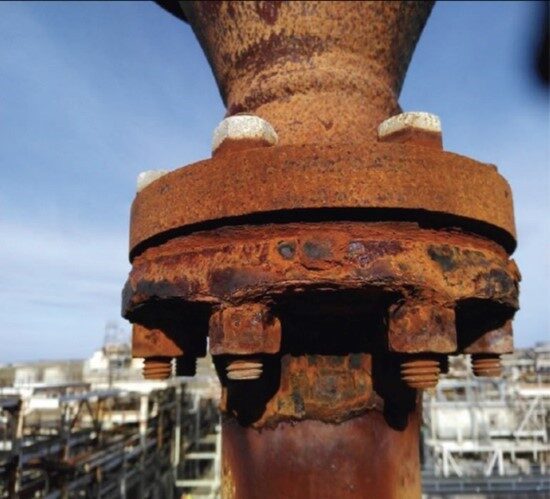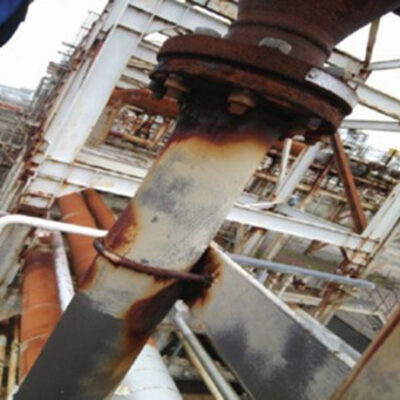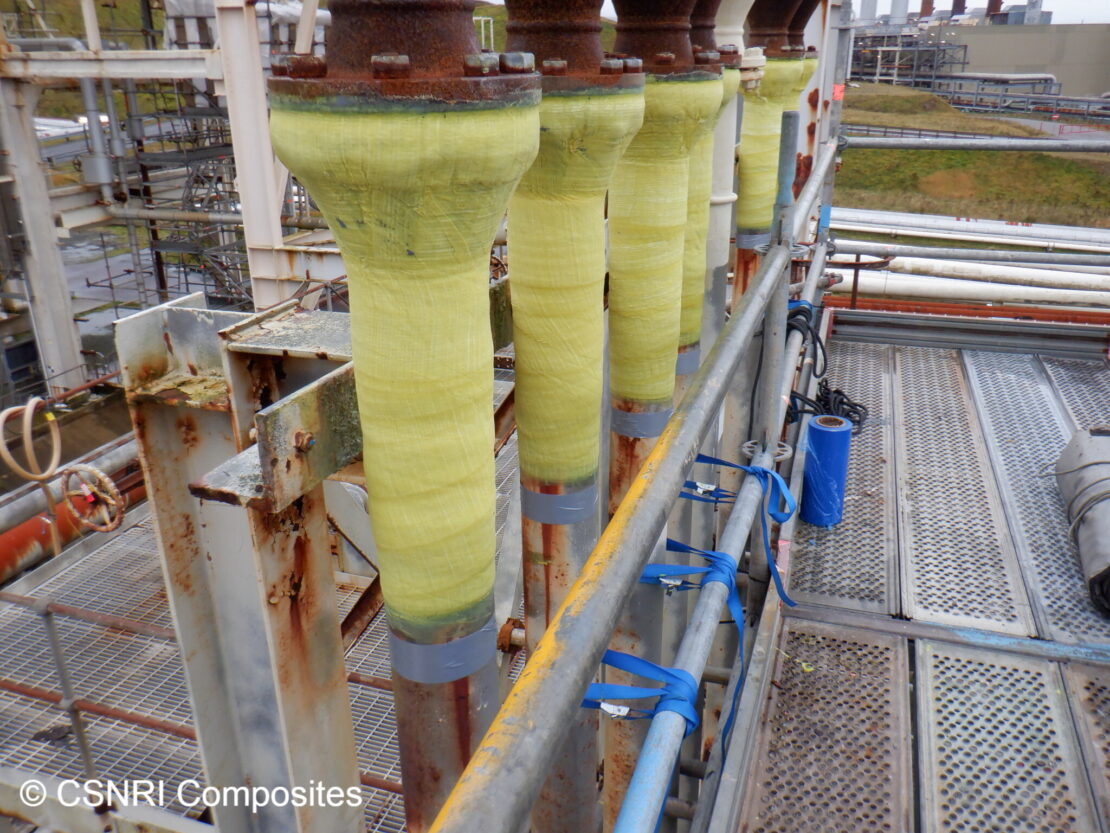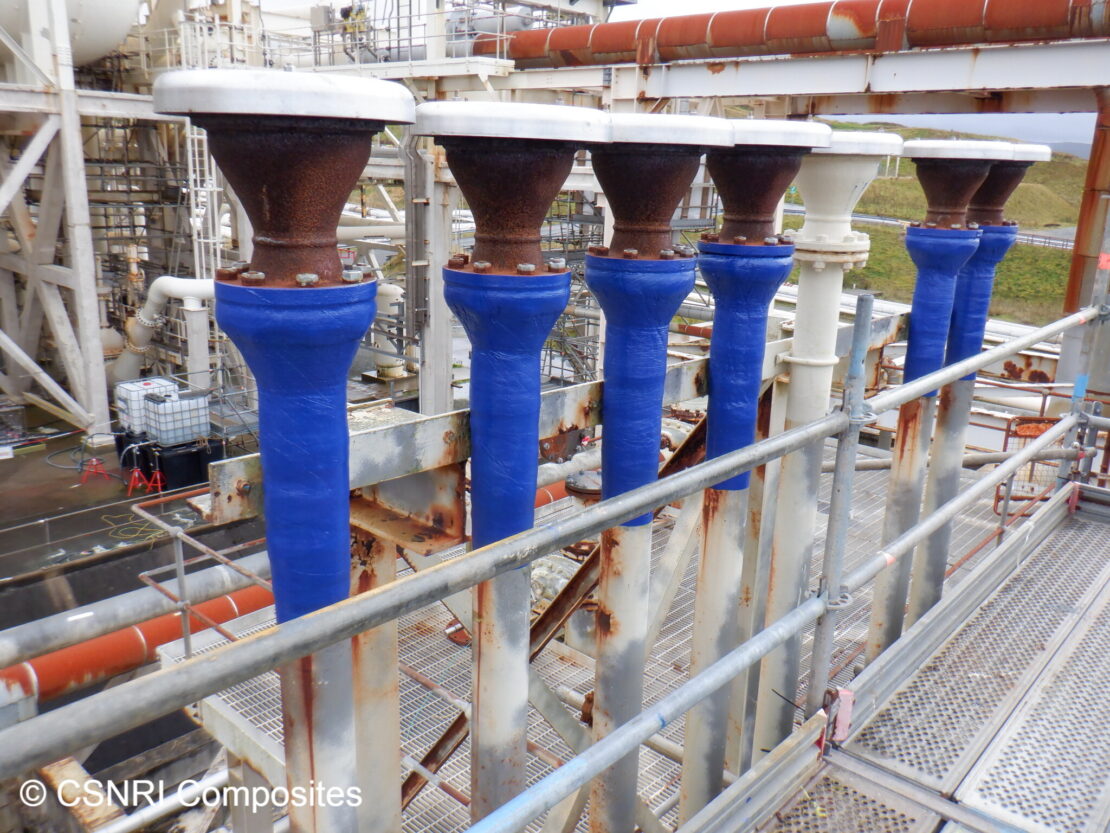Northern UK
Summary
An independent British oil and gas production company with a facility in the northern UK identified severe corrosion in six vent stacks at the U bolt support and below the flame arrestor flanged connection. The vents are scheduled to be decommissioned in two years. Replacement would require a plant shut down to remove and replace the existing vents. Cutting and replacing the spools would also introduce increased risk due to the spark potential associated with the procedure required for replacement. CSNRI was asked to provide an option for a permanent repair that could be completed without hot work or interruption of operation. ThermoWrap® MT was recommended to repair structural integrity of the vent stacks and extend service life, ensuring the plant would be operational past the intended decommissioning date.
Benefits
- Extends the life of aging and corroded assets
- Seals leaks
- Restores pipe strength
- Prevents future external corrosion
- Designed for high-temperature, high-pressure environments.
- Eliminates unplanned down time for high-consequence assets
- Easy installation and rapid curing
- No pipe cutting or welding
- No VOCs

Challenge
Severe external corrosion was visible on each of the six oil-water separator (OWS) system vent lines. The remaining wall thickness ranged from 3.0 mm to 1.2 mm. The locations of the six repairs posed challenging access. An on-site scaffold contractor installed temporary steel restraints to prevent any excessive movement of the vents during repair once the U bolts. Further tie backs were used to hold the vents away from the L shaped bar-type support and allow 360-degree repair of the entire section of line.
Solution
With varying degrees of corrosive damage and wall thickness, and as a conservative measure, the repair design was performed in accordance with the ISO24817 standard Type-B analysis. CSNRI engineers recommended a system to reinforce the defected areas with a six-layer application of ThermoWrap MT. The solution was engineered to restore the line to its design capacity and extend the service life of the six stacks. ThermoWrap MT is an engineered, field-saturated repair system made of proprietary fiberglass cloth applied with a two-part epoxy and a high-modulus filler material. It is used globally in plants, refineries, tank farms, terminals and on offshore assets as a pressure-containing repair to seal leaks and as a reinforcing repair to restore the strength of a pipe in the axial and circumferential directions.
Application
Due to the thick scabbing around the U-bolt locations, CSNRI technicians removed the U-bolt supports using cold cut methods which allowed the repairs to be extended past these locations. Additionally, as the line was positioned extremely close to the support removing the bolts allowed the repositioning of the line away from this restriction so that repair could be installed to the full 360 degrees of the lines.
The lines were prepared using mechanical tooling to achieve a surface profile of at least 30 microns. The repair areas were thoroughly degreased with isopropanol wipes. With the defect located directly beside the flange face, the repairs were extended onto the flange perimeters. EPN-101 epoxy was used to build out the flange face and fill other surface defects.
The repair area was then coated with an even layer of SFE-330, averaging 200 microns in thickness. The ThermoWrap MT material was saturated in the field with SFE-330 resin. Six layers were applied from the flange perimeter and onto the pipe at the opposite end. The original repair length was 300 mm for each location. Once the support was removed, further UT confirmed the wall thickness to be below Tmin at the contact point. To restore wall thickness, the repair was extended to 600 mm. The repair was then encapsulated in six layers of compression film. A heater blanket was applied to the repair based on the following curing schedule: two hours at 40°C and six hours at 60°C. Once the curing cycle was completed, the lines were further coated in a UV-stable epoxy coating for additional protection against the harsh environmental conditions the lines are exposed to on an ongoing basis.


Results
The six vent stacks were fully repaired, restoring structural and operational integrity to the line. The repair was completed in 2 days without interruption to facility operations. QC/QA protocols indicate that a Shore D hardness of 85 was achieved. The lines are fully operational and the repairs are expected to provide the required integrity until retirement date of the system.


